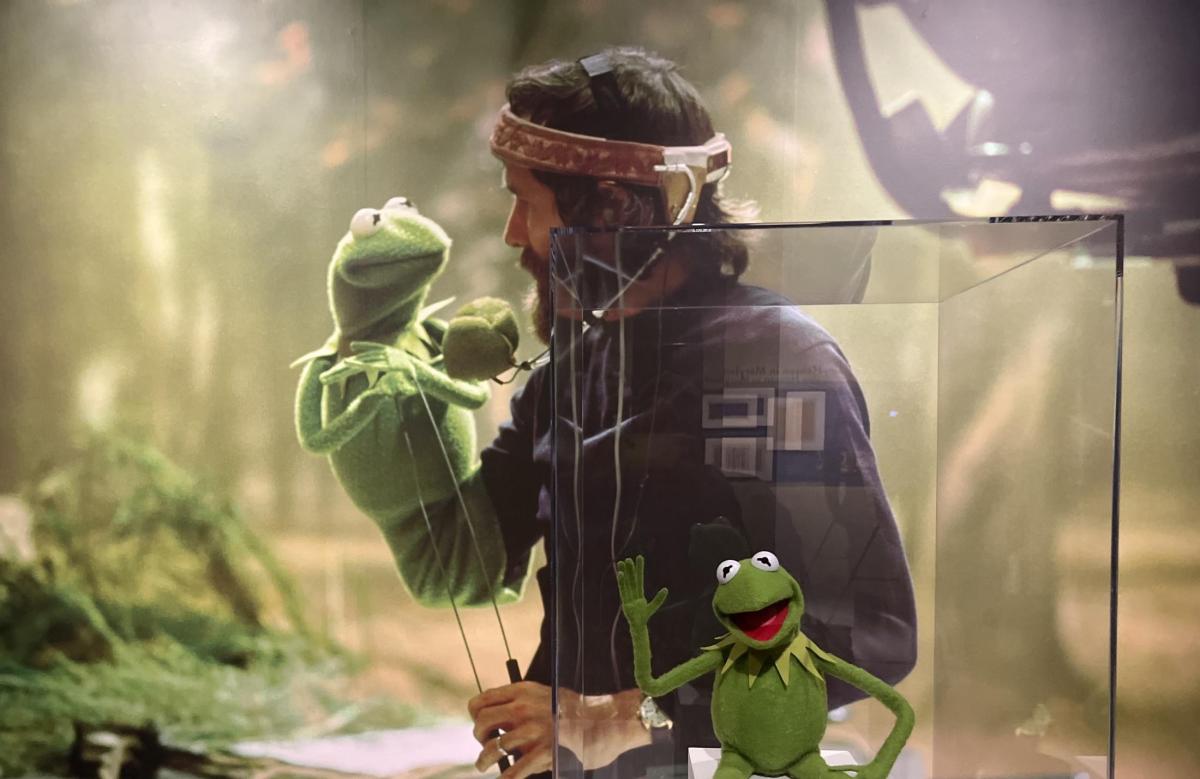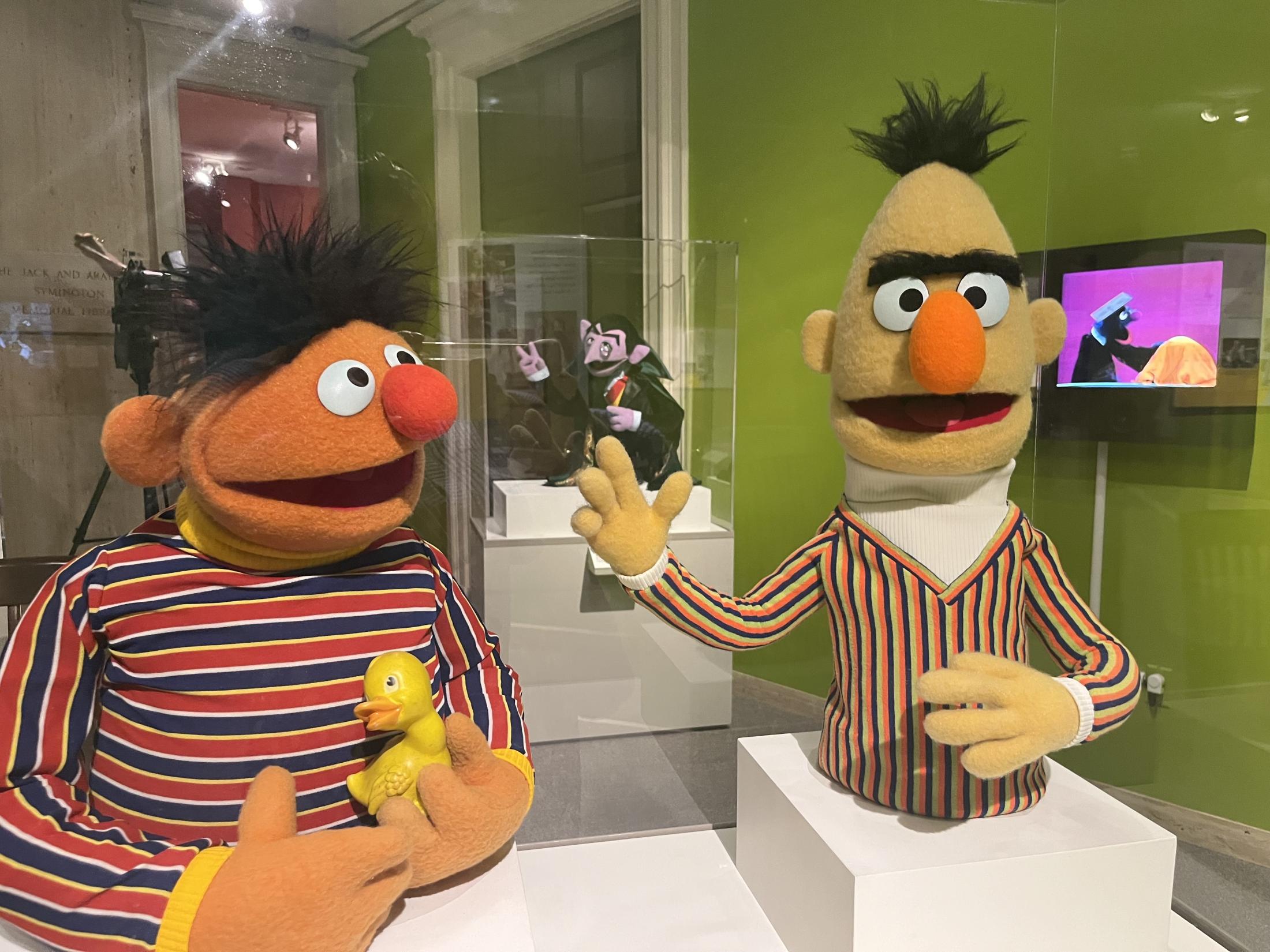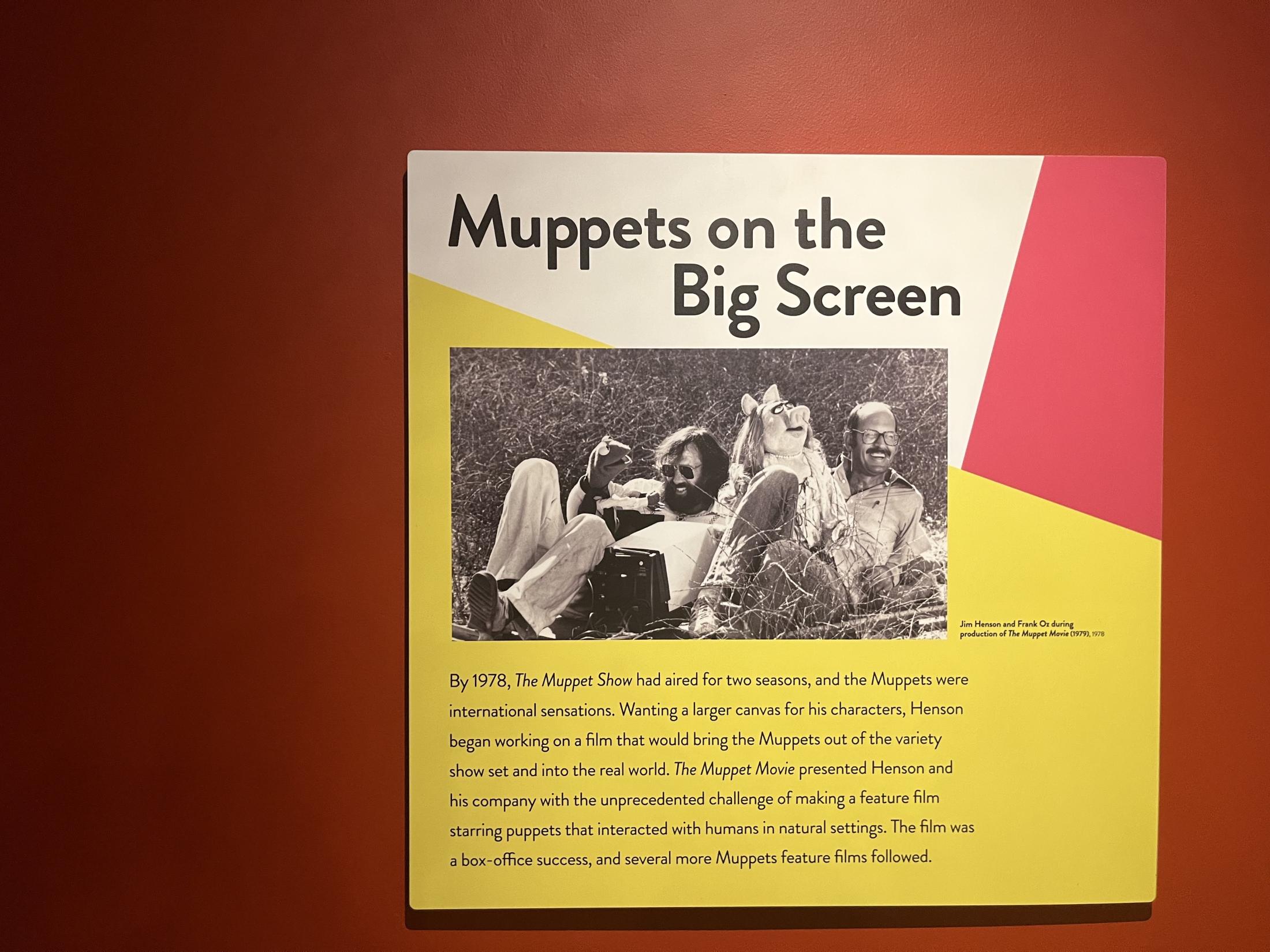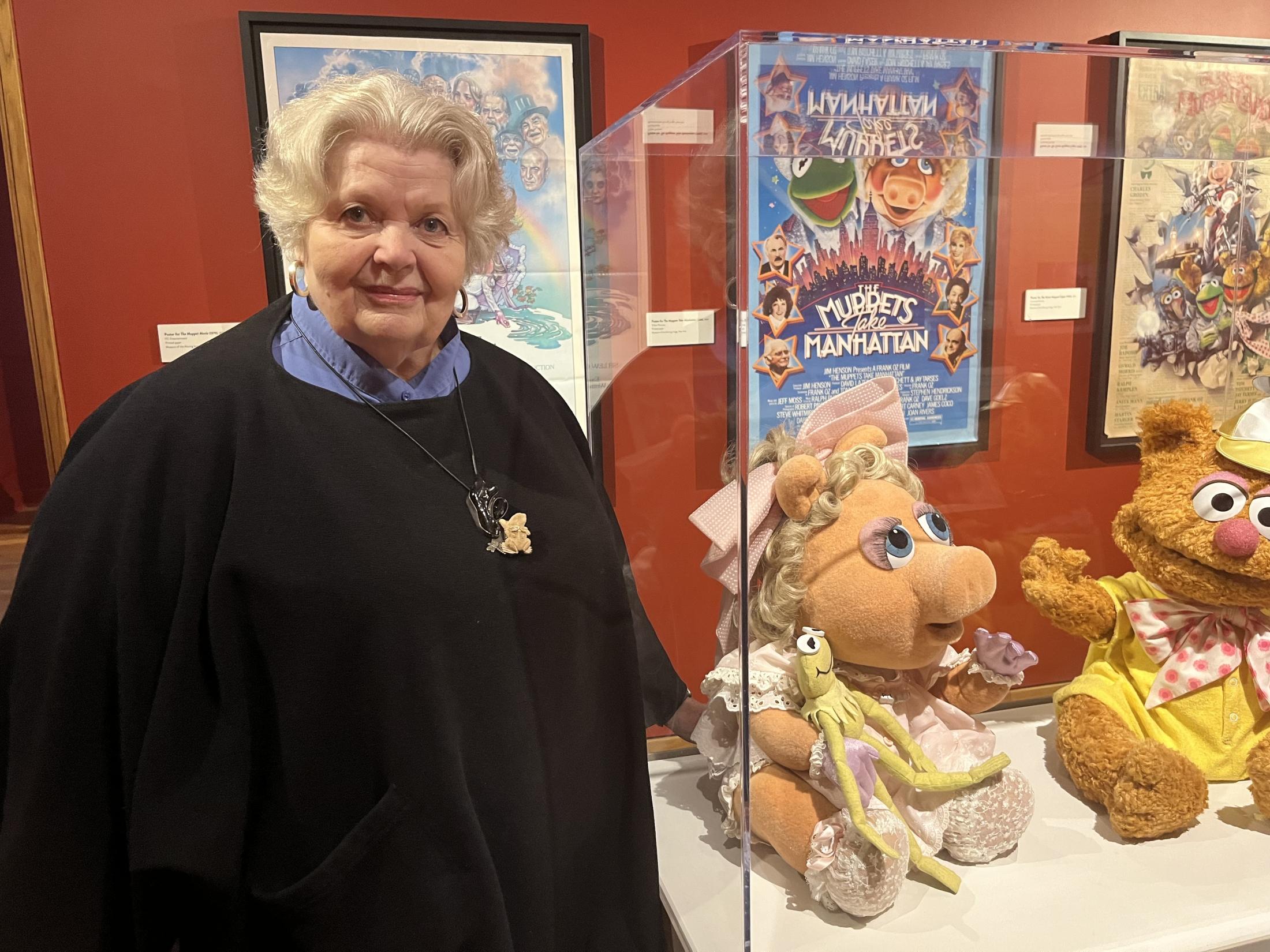
Whether it’s from watching them chase fame on Broadway, conquer Treasure Island, or explore outer space, most of us are familiar with Jim Henson’s muppets. We’ve just never had the chance to see them up close and personal in Baltimore.
Not until now, that is. Starting this month, a handful of the furry and felt-covered characters will reside inside Mt. Vernon’s Maryland Center for History and Culture (MDCHC), which debuted “The Jim Henson Exhibition: Imagination Unlimited” last week. On view through Dec. 30, the display yields an in-depth look at the Maryland-raised puppeteer’s universal mark on entertainment, which includes The Muppets franchise, musical fantasy television series Fraggle Rock, and films like Labyrinth.
Created by the New York-based Museum of the Moving Image (MoMI), the traveling exhibition highlights 5,000-plus square feet of Henson artifacts like puppets, costumes, storyboards, and sketches. There are also interactive installations, like a space for visitors to host their own “televised” puppet show—a way to explore performance artistry through Henson’s eyes.


This stop is a meaningful one for curators, who acknowledge that the MDCHC marks a homecoming for many of Henson’s earlier works. Though not a native Marylander (he was born in Greenville, Mississippi,) Henson was raised in Hyattsville and attended the University of Maryland, College Park (UMD.) To celebrate this, a Maryland display—including images of Henson’s early years in Hyattsville and ads for companies including Baltimore’s former Esskay Meats—greets guests upon arrival.
“There’s this karmic rightness to it,” Catherine Rogers Arthur, the museum’s vice president of collections and chief curator says of the exhibit’s stop in Henson’s former home state. “We keep talking about this exhibition as Henson’s homecoming because his time in Maryland was so influential and pivotal in the development of his career.”
Henson’s family relocated to Hyattsville in Prince George’s County when he was nine years old. He enrolled at UMD—less than one mile away from Northwestern, where he attended high school—in 1954, majoring in home economics. It was there that his passion for puppetry was realized, while he also dabbled in set design and silkscreen printing.
Among some of Henson’s most influential work from that time is a puppet that he made using his mother’s old green jacket and a Ping Pong ball—known to be the earliest version of Kermit the Frog. Replicas of three of Henson’s lithographs from his UMD years, entitled: “Hilarity,” “Melancholy,” and “Conceit,” have been gifted to MoMI, and are currently on display at MDCHC, courtesy of Henson’s family.
“What’s interesting about them is they’re talking about human feelings and expression; personality traits and character,” says Rogers Arthur. “[They’re from when he was] starting to make this leap concurrent with Sam and Friends [Henson’s first television series, which he created as a college freshman and was filmed and aired daily from Washington, D.C.] but before he realized The Muppets in their full expression. ”
John Davis, curator of UMD’s Special Collections in Performing Arts, which holds more than 70 digital videos donated by the Henson family, calls his enduring legacy “a great example” to the UMD community.
“Just look at what he accomplished as a college student,” Davis says “The work he did in Maryland and D.C. during those early years stands on its own as something special—bursting with creativity, vision, and humor. It becomes even more staggering when you take that discrete period of vibrant ingenuity and place it in the longer timeline of what he went on to do. Few artists could claim a track record like Henson’s when it came to being true to yourself and your art while fearlessly expanding the parameters of multiple forms—puppetry, television, education. He created characters and techniques that laid the foundation for a cultural and artistic force.”
The MoMI exhibition makes it a priority to highlight each of Henson’s mastered mediums, fusing both audio and visual works. (Think: The Muppet Show’s iconic “Java” number.) Attendees will also recognize characters like Kermit, who sits proudly right in front of Henson’s portait, as well as Ernie, Bert, The Count, and the trailblazing Miss Piggy.
“It’s especially fun to be here because I know that so much of Jim’s life was a part of this community,” Bonnie Erickson, the 81-year-old designer of the famous Muppet—who was inspired by her uncle’s pigs and jazz performer Peggy Lee—said at the MDCHC exhibit opening last week. “I can only imagine how lucky he’d be to know that all of his work is on display.”

Like Henson, who Erickson says was rarely fazed by people saying no, “Miss Piggy was persistent, and became this incredible diva. I feel very proud that I got her on her way.”
As they explore the exhibition—which will officially kick off with a “Henson Homecoming” puppetry arts festival featuring live music, local artists, and film screenings on June 3—Erickson hopes guests will be reminded of Henson’s resoluteness.
“Jim would persevere,” she says. “He had great confidence in his work and the people he worked with, and he was a collaborator. He really wanted to give people an opportunity to create the worlds that he envisioned.”
Above all, she says, he was simply kind.
“I call Jim a gentle anarchist because he had really incredible feelings about what was right and wrong,” she says. “He truly wanted to make the world a better place. If you come to the exhibit, you’ll see quotes from him and his colleagues that will help you understand his attitude toward the world.”
